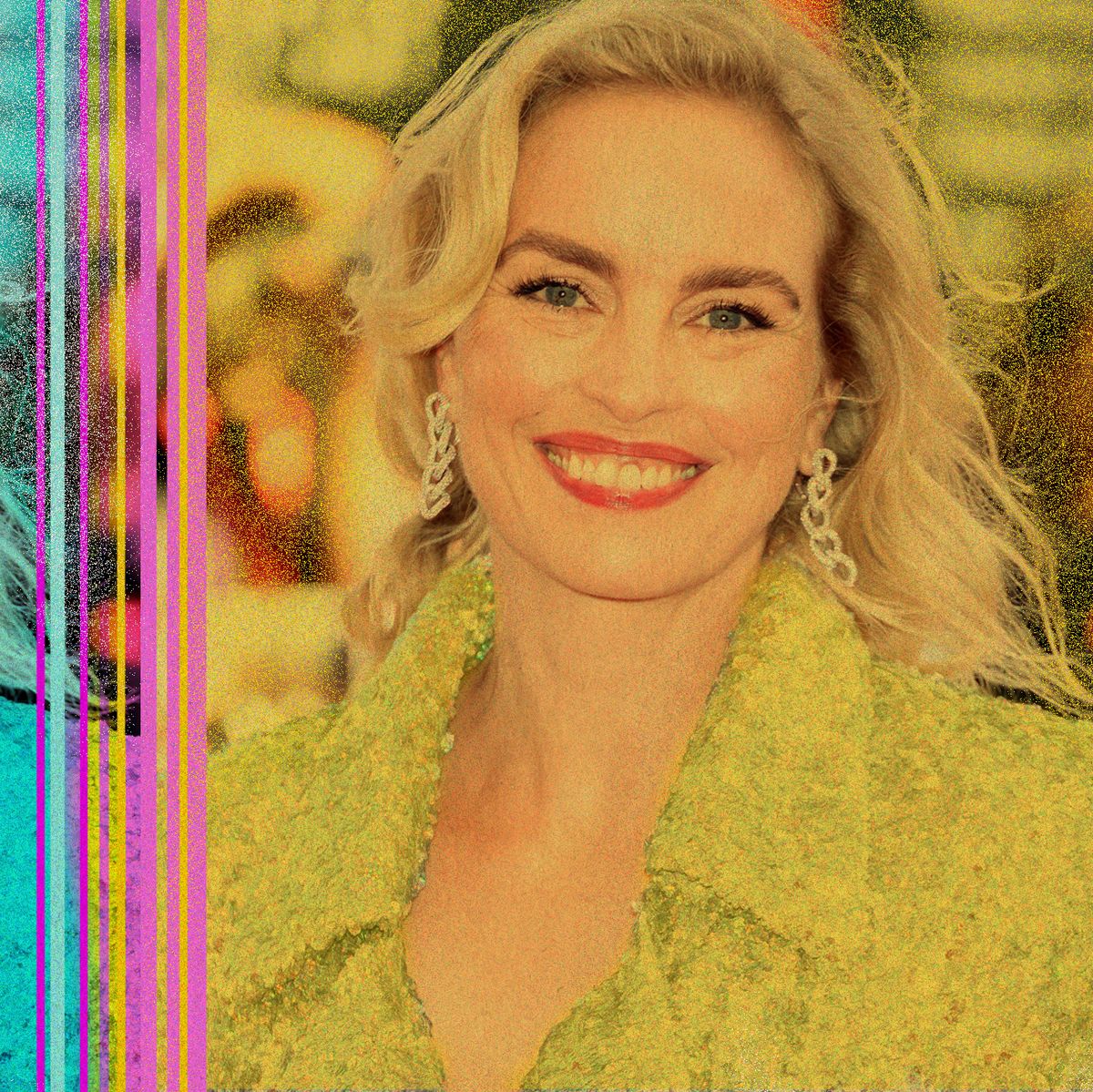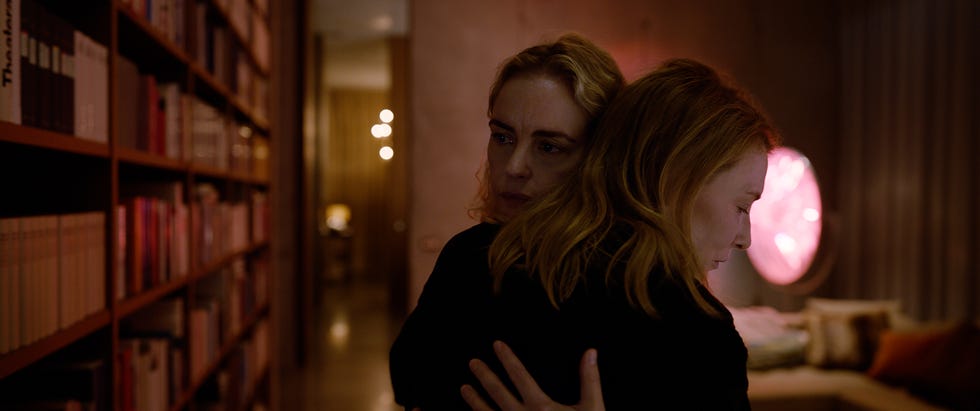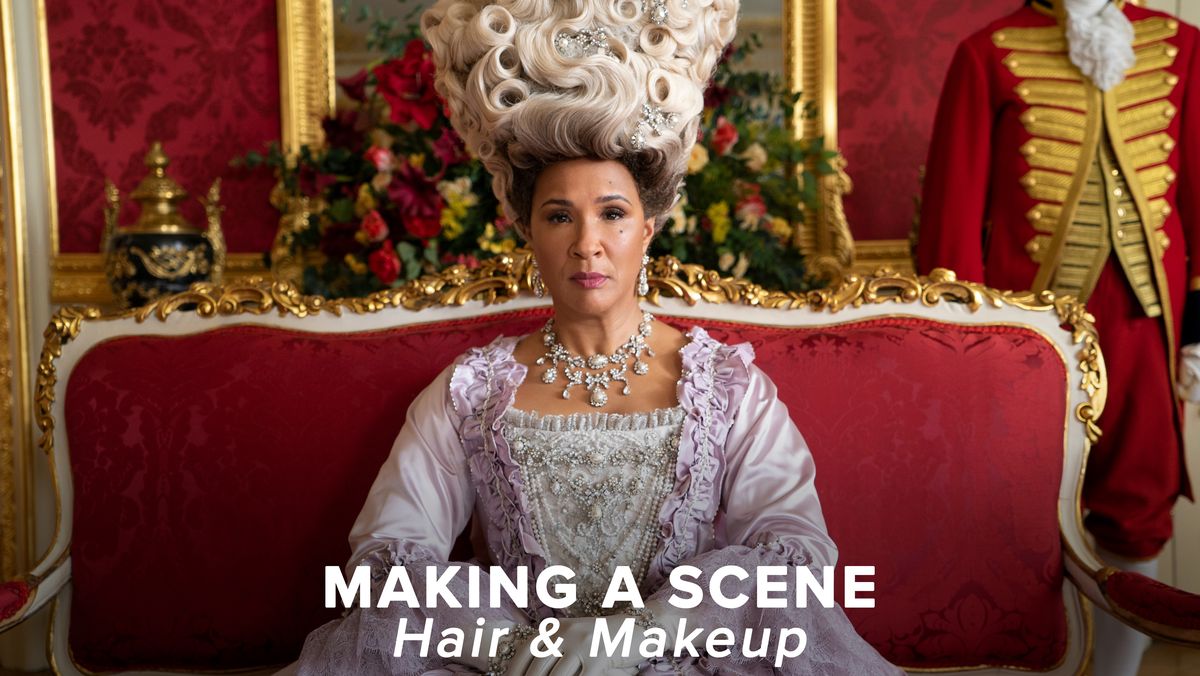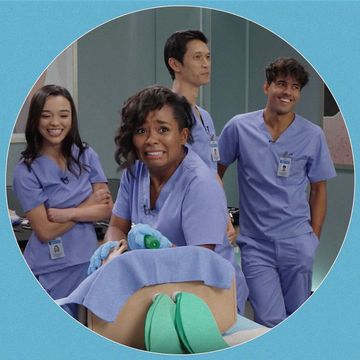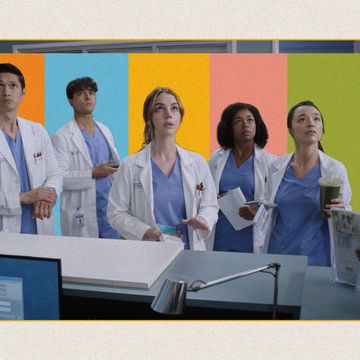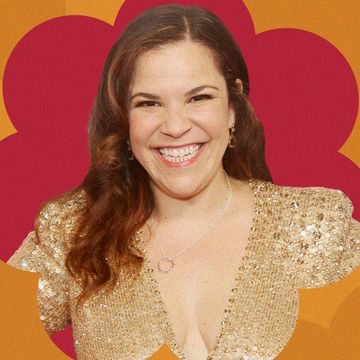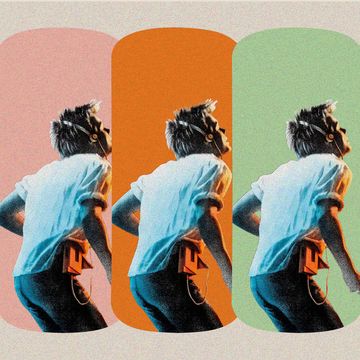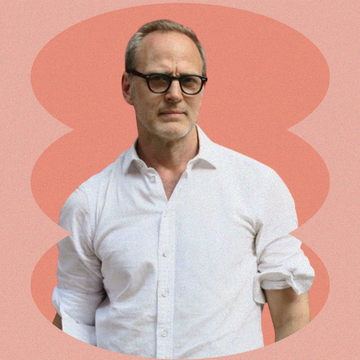Nina Hoss is one of Germany’s most renowned and compelling actors. She brings a quiet sensitivity to the screen that feels otherworldly and natural simultaneously, making her a fitting star for the silver screen.
She is a rarity in Hollywood, where German celebrities are few and far between. Besides Heidi Klum, co-host of Making the Cut, there are only a handful of well-known German stars working in the U.S., including Hoss, Udo Kier (Swan Song) and Daniel Brühl (Quentin Tarantino’s Inglourious Basterds). Hoss’ star power shines bright in director Todd Field’s latest film, Tár, which she appears in alongside Cate Blanchett. The Focus Features film opened theatrically on October 7 and hits theaters nationwide on October 28. Tár has garnered critical acclaim — and Oscar-nomination buzz for Hoss — since it debuted with rave reviews at the Venice International Film Festival this summer. Variety’s Clayton Davis said Hoss “should land her first Oscar nomination in the supporting category.”
Hoss plays Sharon Goodnow in Tár, the watchful, wise wife of Lydia Tár (Blanchett), a world-renowned composer who makes history as the first woman to conduct a major German orchestra, the Berlin Philharmonic. Hoss, who plays first violin in Tár’s orchestra, understands her role as the wife of a creative genius, but she’s also dragged into the ups and downs of having a partner who is brilliant. Tár’s life takes a turn after she experiences a rocky encounter with a millennial student at a university, which reveals her true colors. The incident is caught on video by someone lurking in the class, putting her global fame at risk.
Hoss, who was born in Stuttgart, started out acting in German theater productions. She then saw her rise in German cinema, shooting six films with director Christian Petzold, including Phoenix (2014) and Barbara (2012), and is sometimes credited as the director’s muse. She won the Berlin International Film Festival’s Silver Bear for Best Actress in 2007 for Petzold’s Yella. It wasn’t until 2014 that she hit the American market, starring in Anton Corbijn’s film A Most Wanted Man and Showtime’s wartime espionage series, Homeland, which was shot in Berlin, where she currently lives. Many parts of Tár were also shot in Berlin — specifically, the neighborhoods of Mitte, Kreuzberg, and Moabit. Ahead of the film’s premiere, Hoss speaks with Shondaland about working with Cate Blanchett, following her intuition, and the power of classical music.
NADJA SAYEJ: Are you still living in Berlin? The last time we spoke was in 2016, when you were curating an art exhibition.
NINA HOSS: That was so long ago!
NS: Watching Tár, I was so impressed by Cate Blanchett’s German accent when she speaks the language. It truly is perfect.
NH: I know. I was so impressed. I thought it was fantastic how she worked on it. She did the piano, the conducting, and the German everyday [behaviors]. In a way, it made so much sense. She was in touch with the conductors from the Berlin Philharmonic and Dresden Philharmonic, and they all speak German, so it made sense. She really wanted to show respect to the musicians in their language, even though they are an international group. They are German musicians. It made it so nuanced and detailed to have all these aspects.
NS: Did you shoot in Berlin’s famous orchestra hall the Berliner Philharmonie?
NH: It was the Dresden Philharmonic, but it looks similar. We worked inside the Dresden one. It was amazing to work with this amazing orchestra in Dresden. That really is how we started. For the first two weeks, before we shot any other scenes, we were just working on the scenes related to the Mahler symphony. The way they let us into their process, I could watch the original concertmaster, what his job is, and how he communicates. It taught me about how a conductor communicates with their first violin. It offered me insight into what I wanted to give Sharon’s character.
NS: What do you mean?
NH: In that she is the opposite of Lydia Tár in her personality but also in the way she uses her power. She is a communicator, and that’s what you need to be in this position of first violin — to keep everyone calm for the conductor’s vision. Sharon was the one to pave the path so Lydia gets to this position. You need the first chair, also known as first violin. Without the first chair, you won’t get anywhere as a conductor. That’s the first person you partner up with as a conductor, the first violin. It’s your biggest ally. Whether you’re a couple or not. And I didn’t know that. That’s what I really learned being there, talking to the musicians. It was great.
NS: The first violin is usually a man, right, and so is the conductor? It’s an unconventional story just because it’s a story between two women in these leading roles (Lydia Tár as conductor, and Sharon Goodnow as first violin).
NH: I can’t really think about an orchestra where the first chair is a female. It’s a position that holds so much responsibility. They have so many conductors in front of them, so many guest conductors. What Wolfgang Hentrich, the first chair, told me is that sometimes they lose the rhythm, and the whole sound will fall apart. The whole orchestra will look to the first violin, who says basically, “And now, and now,” holding the whole body of the orchestra together. It’s an incredible position to have. What I loved about Todd’s script is that being a woman in this position is not an issue. We don’t discuss that it’s phenomenal. That’s what I love about it — you don’t even have to think about the gender; it’s just great positions. It didn’t matter. But as an audience member, you think about all these things that come up in the film because they are women. But we don’t have to carry that with us.
NS: You spoke onstage as part of the New York Film Festival’s press screening and said that you looked to Gustav Mahler’s wife as inspiration to see how the partner of a genius worked. Can you tell us more about that?
NH: Alma Mahler is one of the most fascinating women I’ve ever read about. Sharon is a musician and could be someone in her own right, but Alma couldn’t be, due to the time she lived in. But she made sure Mahler was surrounded by other famous geniuses. She made sure they became well known, made lots of money — she was the force behind him. She wasn’t innocent; she was somewhat monstrous in many ways. Highly intelligent. She was an incredibly risky, brave, powerful woman. I saw little things in the script of how we could bring that out more. It made me ask: “What does Sharon want out of this connection?” Reading about Alma just freed my mind.
NS: What was it like working with Cate Blanchett? You had such great synergy on-screen.
NH: I’m so happy because of that; she’s such a generous, warm, intelligent person. She let me in completely. She was very open. That made it so easy to connect with her. Of course, I knew her body of work, and we had mutual friends. We work on similar characters. And we both knew that. So, there was a strange connection anyway. I had no idea she wanted to work with me. I still can’t believe it. We have a similar way of working on things, I think.
NS: You just signed with the CAA agency. What does this mean to you as a German actor working in Hollywood? It’s hard for German actors to make it into the mainstream. It feels like the next level in your career.
NH: You know, I never in my life made plans. I take it step-by-step. For me, it’s being lucky enough to be in a pod of people that make fantastic projects. That’s what I’m in it for. The stories. This, now working with CAA, is a big opportunity, but it’s also opening to a whole other room for collaboration. That’s what I’m so thankful for. I’m so thankful to Todd for this part and putting me out there. It’s a phenomenal next step; I’m looking forward to whatever comes my way.
NS: What has been the key to your success? Are you just intuitive, and go with the flow?
NH: I guess intuition is a big part. I always think, “Do I want to see this film? Am I interested in this story?” Then I know I want to spend the next three to six months on this topic. Do I want to be with these people so intensely? That’s the only way we know how to do it. If I’m not really hooked on a story, I can’t do it then, or I would do a bad job, I guess. Then, it’s the character in the story, but it’s mainly the world the characters are in — if that’s something that intrigues me. It’s probably an intuition thing.
Nadja Sayej is an arts and culture journalist based in New York City who has written 5 books, including Biennale Bitch and The Celebrity Interview Book.
Get Shondaland directly in your inbox: SUBSCRIBE TODAY
